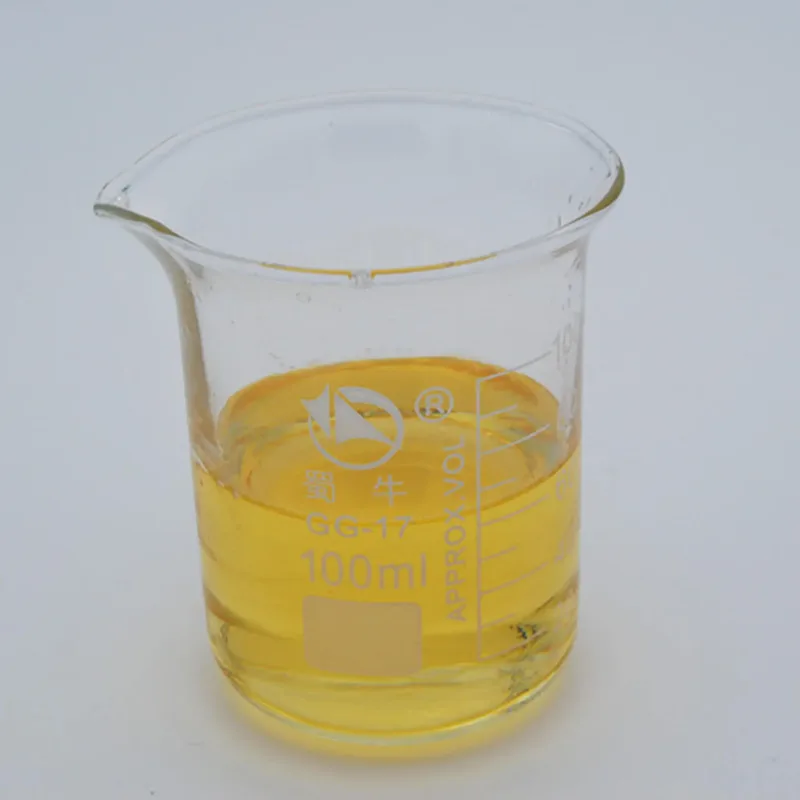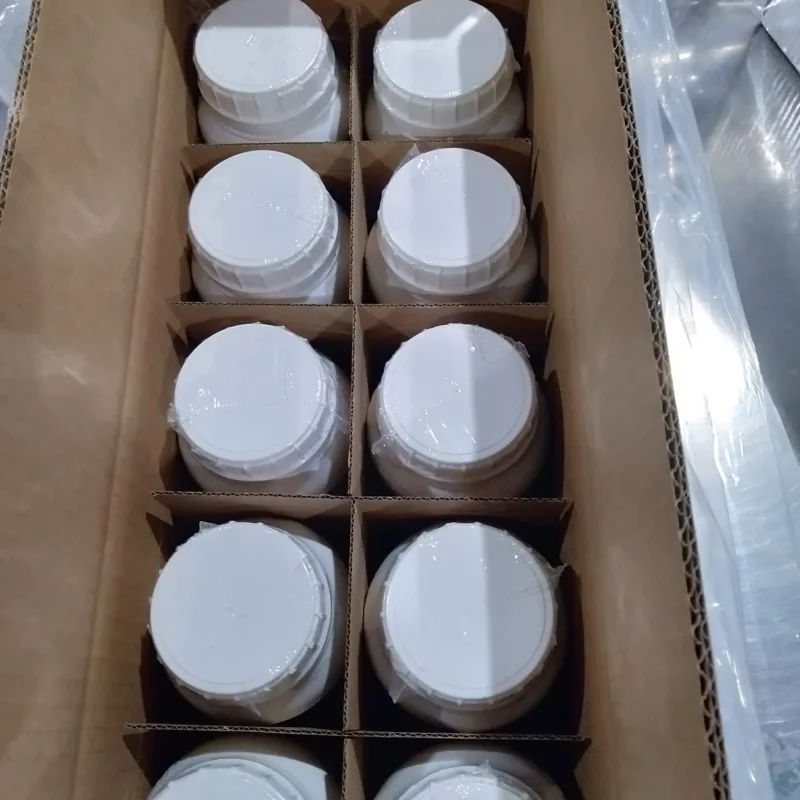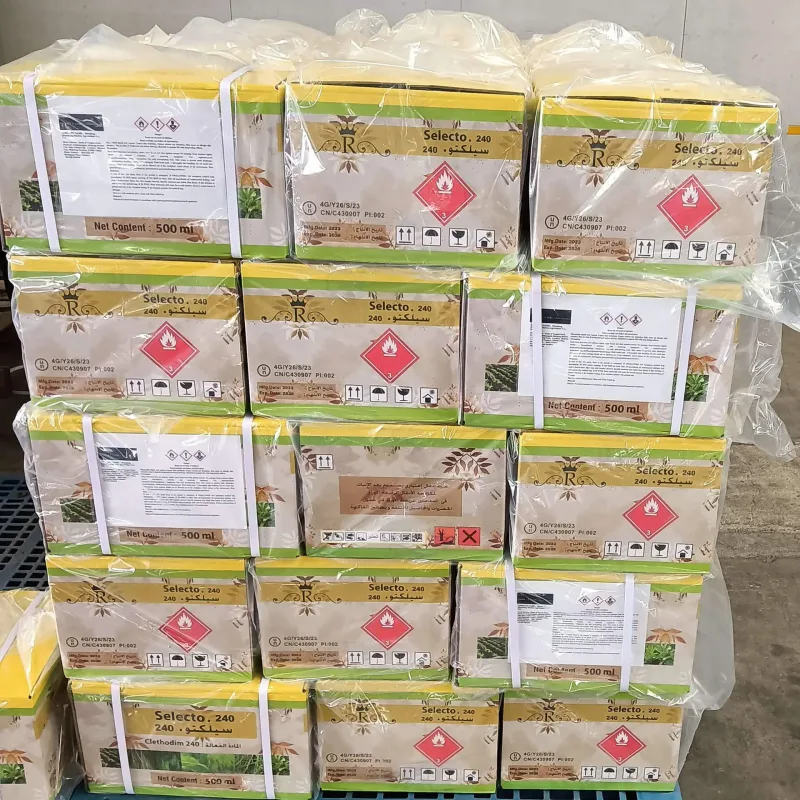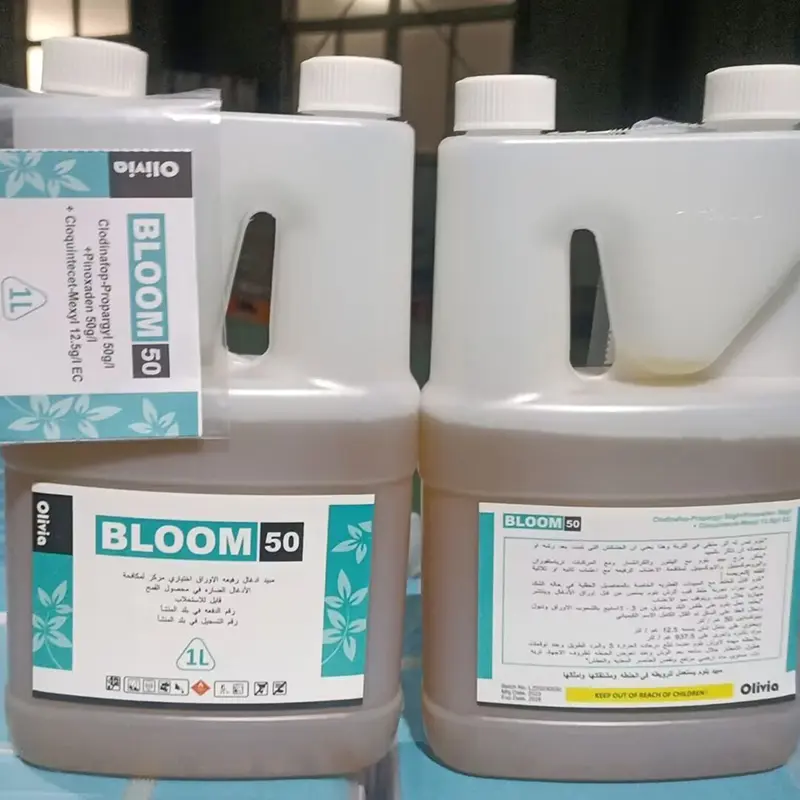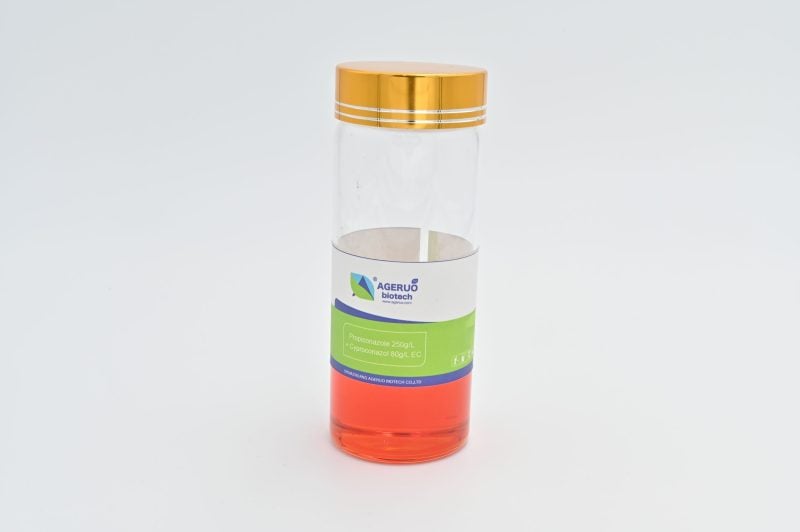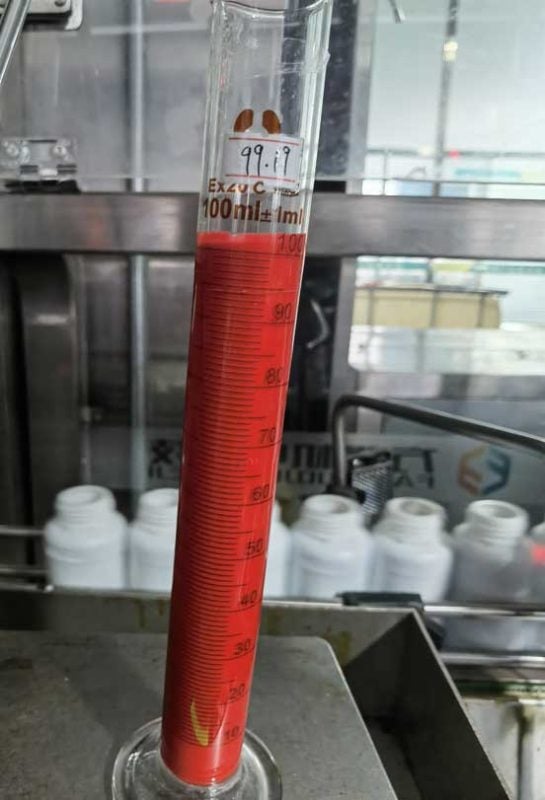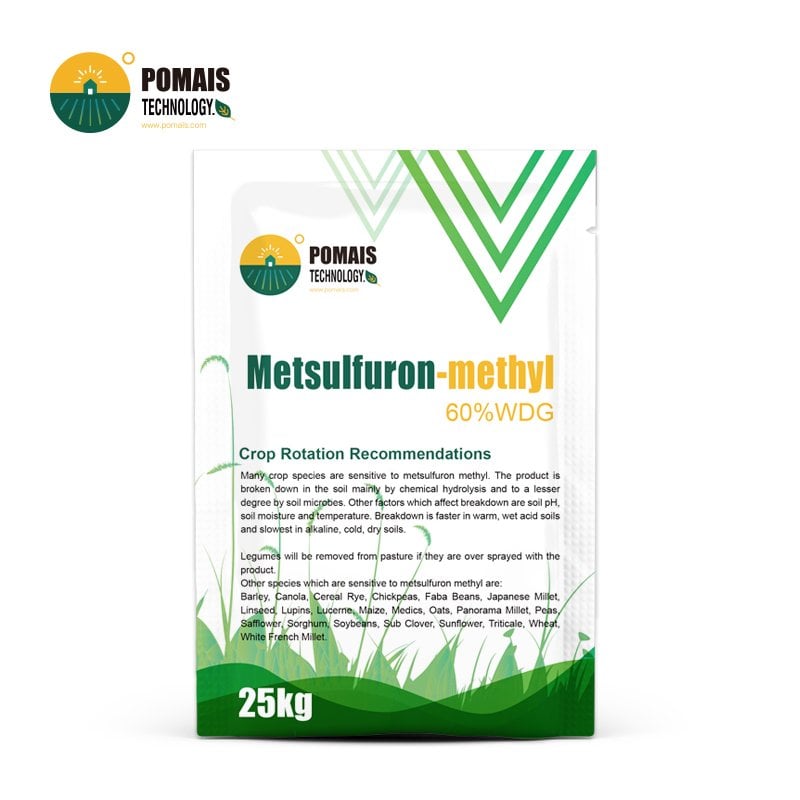Clethodim Herbicide | Selective Grass Killer for Broadleaf Crop Protection
Let’s face it—grassy weeds don’t play fair. They sneak between your soybean rows, invade your peanuts, and strangle your sugar beets like uninvited guests at a field party. That’s where Clethodim Herbicide steps in—not with brute force, but with surgical precision.
Clethodim (Sometimes you may search for other names such as clethodin, clethodem, or clethidim) is a selective, post-emergence herbicide that targets a wide spectrum of annual and perennial grasses—without laying a finger on your precious broadleaf crops. Its main superpower? It inhibits ACCase (acetyl-CoA carboxylase), a vital enzyme in grass weeds responsible for fatty acid synthesis. Without fatty acids, those weeds can’t grow, can’t reproduce, and definitely can’t come back.
Unlike generic grass killers, this herbicide clethodim is beloved by farmers growing:
- Soybeans that can’t tolerate grassy competition
- Cotton and peanuts that need clean rows for easier harvest
- Vegetables and root crops like potatoes and beets that get choked by foxtail or barnyardgrass
With formulations ranging from Clethodim 120 g/L EC to Clethodim 240 g/L EC and beyond, you can choose your firepower based on the intensity of infestation. Whether you’re running a 500-acre soybean farm or trying to maintain clover plots in a food plot, Clethodim herbicide has your back—and your broadleaf crops will thank you.
- Designed for Professional Buyers & Bulk Orders
- This product is available for business purchase and large-scale distribution.
- We support custom packaging, labeling, and formulation to meet your market needs.
- Let’s build your brand together.

About Clethodim Herbicide | Selective Grass Killer for Broadleaf Crop Protection
About Clethodim Herbicide | Selective Grass Killer for Broadleaf Crop Protection
| Product Name | Clethodim |
| Chemical Name | (E,E)-(+/-)-2-[1-[[[(3-chloro-2-propenyl)oxy]imino]propyl]-5-[2-(ethylthio)propyl]-3-hydroxycyclohex-2-en-1-one |
| CAS Number | 99129-21-2 |
| Chemical Formula | C17H26ClNO3S |
| Formulations Available | Clethodim 12% EC Clethodim 13% EC Clethodim 24% EC Clethodim 26% EC Clethodim 30% EC Clethodim 35% EC Clethodim 120 g/l EC Clethodim 240 g/l EC Clethodim 480 g/l EC |
| Target Weeds | Grassy weeds, including annual and perennial grasses like foxtail, barnyardgrass, johnsongrass |
| Suitable Crops | Soybeans, cotton, canola, peanuts, sugar beets, potatoes, vegetables |
| Toxicity | Low toxicity to mammals and birds; moderate aquatic toxicity |
| Mode of Action | ACCase (acetyl-CoA carboxylase) inhibitor, stopping lipid synthesis in grass weeds |
| Shelf Life | 2 years |
Why farmers choose clethodim over others?
- It’s selective (no collateral damage to crops)
- It’s effective (say goodbye to crabgrass and johnsongrass)
- It’s trusted (used worldwide in commercial crop systems)
And let’s not forget—it doesn’t just kill weeds, it restores balance to your cropping system.
How Clethodim Herbicide Works: It Hits Grasses Where It Hurts
Clethodim doesn’t just hit weeds—it outsmarts them. While most herbicides go for a blanket kill (taking everything in their path), Clethodim is more like a heat-seeking missile aimed specifically at grasses. And no, we’re not talking about just annuals. Clethodim knocks out stubborn perennial grasses like johnsongrass, bermudagrass, and foxtail like it’s personal.
The Science Behind the Kill: ACCase Inhibition
Mode of Action: Clethodim works by inhibiting the acetyl-CoA carboxylase (ACCase) enzyme, which is essential for fatty acid synthesis in grass weeds. Without fatty acids, cells can’t form membranes. Without membranes, there’s no growth. And without growth—well, the weeds are done for.
Why this matters:
- Grasses rely on ACCase for energy production and cell development
- Broadleaf crops, on the other hand, have a different form of this enzyme—one that Clethodim can’t touch. That’s what makes this product selective and crop-safe
Systemic Action = Deep Control
Once absorbed through the foliage, Clethodim moves systemically within the plant via the phloem, targeting growing points and meristematic tissues. It’s not just a surface burn—it travels all the way down to shut down the weed’s life system.
It’s like pulling the plug on a weed’s central command.
Visible Effects & Rainfast Timing
- Yellowing and reddening of foliage appear within 5–10 days
- Complete kill can occur within 10–20 days, depending on weed size and species
- Clethodim rainfast time? As little as 1 hour after application—so yes, it’ll survive that surprise afternoon shower
So whether you’re targeting quick-germinating annuals or deep-rooted perennials, Clethodim herbicide works from the inside out, stopping grassy weeds before they have a chance to steal your crop yield.
Application Crops and Target Weeds: Where Clethodim Shines—and What It Silences
Clethodim herbicide doesn’t try to be everything to everyone—and that’s exactly why it’s so good at what it does. It was built for broadleaf crops, and built to eliminate the grassy invaders that threaten them. So whether you’re a soybean grower, a vegetable farmer, or a clover plot manager trying to keep the food plot clean—herbicide clethodim delivers precision.
Safe Crops for Clethodim Application
Clethodim is selective to a wide range of broadleaf crops. Here’s where you can confidently use it:
| Crop Type | Examples |
|---|---|
| Legumes | Soybeans, Peanuts, Alfalfa, Clover |
| Oil Crops | Cotton, Canola, Sunflowers |
| Root & Tuber Crops | Sugar beets, Potatoes, Carrots |
| Vegetables | Tomato, Lettuce, Onion, Pumpkin |
| Other Broadleaf Uses | Food plots, wildlife management (e.g., chicory, clover blends) |
Yes, you can even spray clethodim on clover—without wiping out your entire plot. That’s the kind of finesse glyphosate could never offer.
Target Grass Weeds
If it’s a grass, chances are Clethodim will handle it. Whether it’s sprouting fast or creeping in slow, here’s what you can expect this herbicide to take down:
| Weed Type | Examples |
|---|---|
| Annual Grasses | Foxtail (Setaria spp.), Barnyardgrass (Echinochloa spp.), Crabgrass (Digitaria spp.) |
| Perennial Grasses | Johnsongrass (Sorghum halepense), Bermuda grass (Cynodon dactylon), Quackgrass, Ryegrass |
| Volunteer Grains | Volunteer corn, Wheat, Barley |
| Tough Cases | Wild oats, Goosegrass, Lovegrass |
Looking for clethodim for bermudagrass? It’s one of the few herbicides that can actually suppress it without torching your broadleaf cover crops.
Summary Snapshot
- What Clethodim kills: Annual and perennial grasses—yes, even the persistent ones
- What Clethodim spares: Broadleaf crops like clover, soybeans, and vegetables
- What you get: A cleaner field, better crop access to nutrients, and fewer headaches from failed tank mixes
Think of Clethodim as your “grass assassin”—lethal to the enemy, loyal to your crops.
Recommended Rates and Application Methods: Get It Right, Get It Gone
Using Clethodim herbicide effectively isn’t just about spraying—it’s about spraying smart. Timing, dosage, and technique all influence how well the product performs. Apply too little and the grasses laugh. Apply too much and you’re wasting product. Apply it just right, and you’ll wonder why you ever fought grass weeds without it.
Standard Application Rates by Formulation
| Formulation | Target Use | Clethodim Herbicide Rate | Application Timing |
|---|---|---|---|
| 120 g/L EC | Soybeans, peanuts, vegetables | 120–250 mL/ha | Apply post-emergence when grass weeds are young (2–4 leaf stage) |
| 240 g/L EC | Cotton, sunflower, clover plots | 150–250 mL/ha | Foliar application during active growth of weeds |
| 240 g/L EC | Potatoes, sugar beets, food plots | 180–250 mL/ha | Apply when grasses are actively growing and not under stress |
| Tank Mix Note | With oil-based adjuvant | Add 0.5–1.0% v/v crop oil concentrate or methylated seed oil for improved uptake |
For reference: 240 mL/ha = ~3.2 oz/acre, one of the most searched clethodim herbicide rates per acre.
How to Mix Clethodim Herbicide
- Step 1: Fill the spray tank with half of the required clean water
- Step 2: Add the measured clethodim dose
- Step 3: Stir or agitate continuously to maintain a uniform solution
- Step 4: Add adjuvant if required, then top off with remaining water
Common mix ratio:
For spot treatment: 0.8–1.25 oz of clethodim 240 EC per gallon of water
For broadcast: Use calculated mL/ha or oz/acre based on product label
Rainfast and Reentry Intervals
- Clethodim rainfast period: Typically 1 hour, but applying on a clear, dry day is always recommended
- Reentry Interval (REI): 24 hours for most crops unless specified differently on local label guidelines
Application Reminders
- Always target young, actively growing grass weeds for best control
- Avoid application during drought stress, extreme heat, or after heavy rainfall
- Do not apply to wet leaf surfaces, as this may reduce absorption
- Use flat fan nozzles for even spray coverage, and maintain consistent boom height
Clethodim doesn’t forgive sloppy spraying. Follow the numbers, and you’ll see results that look like magic—but it’s really just good chemistry.
se Considerations and Tank Mix Compatibility: Precision Beats Power
Clethodim is highly selective and effective—but like any refined tool, it needs the right handling. Proper tank mixes and environmental awareness can make the difference between a clean row and a weed comeback tour.
Compatibility Do’s and Don’ts
Can you mix Clethodim and glyphosate?
Technically yes, but with caution. While both herbicides target different weed types (Clethodim for grasses, glyphosate for broad-spectrum kill), glyphosate may antagonize Clethodim when applied together, especially in cool or stressed conditions. If used, always:
- Increase the Clethodim rate slightly
- Add a quality adjuvant (like COC or MSO)
- Test in a small batch first
Can you mix Clethodim and Butyrac 200?
Yes, with compatible crops like clover or food plots. This is a popular combo for controlling grasses and broadleaf weeds together. However:
- Always check label compatibility
- Watch for potential crop sensitivity in young seedlings
Can Clethodim be used with insecticides or fungicides?
Yes, in most cases. Clethodim is generally physically compatible with common foliar products. However, always:
- Perform a jar test first
- Maintain proper spray pH (between 5 and 7 is ideal)
Environmental Factors that Influence Performance
| Condition | Impact | Recommendation |
|---|---|---|
| Drought or heat stress | Slows weed metabolism, reduces absorption | Delay spraying until recovery or apply early morning |
| Overcast days or mild weather | Enhances uptake and reduces volatility | Ideal window for spraying |
| Recent rainfall | May reduce concentration or coverage | Wait until foliage is dry |
| Spray volume | <100 L/ha may lead to uneven coverage | Use 150–200 L/ha for dense grass stands |
Spray Oil is Not Optional
Clethodim relies on oil-based adjuvants (COC or MSO) for effective penetration. Without them, you risk:
- Delayed uptake
- Reduced translocation
- Sub-lethal activity (which can trigger regrowth)
Recommended adjuvant rate:
- Crop Oil Concentrate (COC): 1.0% v/v
- Methylated Seed Oil (MSO): 0.5–1.0% v/v
If you skip the oil, don’t blame the product when the crabgrass is waving at you next week.
Advantages and Technical Highlights: Why Clethodim Stands Out
When it comes to managing grasses without compromising your broadleaf crops, Clethodim herbicide hits a rare sweet spot. It’s not just about killing weeds—it’s about killing the right weeds at the right time, without jeopardizing what you’re actually trying to grow.
Here’s why thousands of growers continue to rely on it year after year.
1. Selectivity That Saves Your Crop
Clethodim offers outstanding crop safety on dozens of broadleaf species. Whether you’re managing a field of soybeans, a clover plot for deer, or a bed of onions, this herbicide gets rid of unwanted grasses—without harming your investment.
- Clethodim for clover is especially popular among food plot managers
- Vegetable growers appreciate its minimal impact on tender crops
- Row crop producers use it confidently in soybeans, peanuts, and cotton
2. Exceptional Grass Spectrum Control
From fast-sprouting annuals to stubborn perennials, Clethodim gets it done. It’s one of the few selective herbicides that:
- Suppresses Bermudagrass, a known problem for wildlife plot managers
- Controls Johnsongrass, foxtail, barnyardgrass, wild oats, and crabgrass effectively
- Can be used for volunteer grain cleanup in sensitive crops
3. Systemic Action = Deep Kill
Thanks to its ACCase-inhibiting mode of action, Clethodim doesn’t just scorch the leaves. It’s absorbed through the foliage and translocated to growing points, shutting down fatty acid production systemically—right at the weed’s core.
- No regrowth
- Minimal resistance pressure when used properly
- Lasting impact on underground plant parts
4. Flexible Timing and Rainfast Performance
Unlike some herbicides that lock you into a narrow application window, Clethodim allows flexible timing as long as the grass is actively growing. And with a rainfast period as short as one hour, it’s built to work around unpredictable weather.
In other words, you can spray in the morning and beat the afternoon storm—without losing sleep or performance.
5. Ideal for Integrated Weed Management (IWM)
Clethodim is a valuable tool in herbicide rotation programs. It complements other broad-spectrum or broadleaf-selective herbicides and helps delay resistance development.
- Works well in glyphosate-resistant management programs
- Offers a clean grass-control option in non-GMO systems
Summary:
Whether you’re looking to clean up grassy invaders in soybeans, preserve your clover stand, or get a handle on perennial grass pressure, Clethodim herbicide offers a flexible, selective, and proven solution with a reputation that speaks for itself.
Storage and Handling: Keep It Safe, Keep It Potent
Clethodim herbicide isn’t just powerful—it’s also chemically stable and easy to manage when stored correctly. Whether you’re stocking up for a season of row crop applications or preparing pallets for international export, following proper storage and handling protocols ensures you get peak performance every time.
Storage Guidelines
- Temperature Range: Store in a cool, dry place between 5°C and 35°C
- Container Integrity: Keep in original, tightly sealed HDPE containers to prevent evaporation and contamination
- Shelf Life: Up to 24 months under recommended storage conditions without degradation
- Avoid Exposure: Keep away from direct sunlight, excessive heat, freezing temperatures, or ignition sources
Pro Tip: Always store clethodim EC formulations away from oxidizers, food, animal feed, and drinking water sources.
Handling Precautions
- Personal Protection: Wear chemical-resistant gloves, goggles, long sleeves, and respiratory protection during mixing and spraying
- Spill Control: Clean small spills with absorbent material and dispose according to local pesticide disposal regulations
- Tank Mixing: Use only clean, non-corrosive equipment. Do not mix in galvanized or unlined metal tanks
- Rinsing & Waste Disposal: Never pour rinsate into rivers, lakes, or drains. Dispose containers as per your local agrochemical waste guidelines
Transportation Notes
| Transport Category | Specification |
|---|---|
| UN Classification | Non-hazardous under standard agricultural transport conditions |
| Export Format | Available in 500ml, 1L, 5L, 20L, 200L drums, or 1000L IBC bulk packaging |
| Label Requirements | Include batch number, production/expiry date, precautionary symbols, and usage instructions in applicable languages |
| Shipping Compliance | GHS-compliant for land, sea, or air transport; supports international delivery to Asia, Africa, Middle East, South America, and Eastern Europe |
In short: Clethodim is built for serious farming—but it doesn’t come with complicated storage headaches. Just keep it dry, seal it tight, and use it like the crop-saving tool it was designed to be.
Partner with Us: Your Trusted Supplier of Clethodim Herbicide
Whether you’re a distributor sourcing for national agricultural campaigns, a retailer building your herbicide portfolio, or a grower looking for a reliable post-emergence grass killer, we’re here to make it easy—and professional.
As an experienced manufacturer and exporter of Clethodim herbicide, we offer:
- Full-strength EC formulations including 120 g/L, 240 g/L, and 480 g/L, adaptable to both small-scale retail and bulk institutional needs
- OEM and Private Label Services with multilingual packaging, tailored branding, and regional regulatory support
- Technical documentation packages: COA, MSDS, TDS, product label templates, and registration files available on request
- Global logistics support with proven delivery channels to Asia, Africa, Latin America, the Middle East, and Eastern Europe
Whether your customer needs clethodim for clover plots, clethodim herbicide rate guidance, or rainfast performance under tropical conditions, our team delivers both product and knowledge—no extra charge for the expertise.
Ready to move forward?
- Request a sample or product data sheet
- Ask about bulk pricing or white label options
- Discuss clethodim availability in your market
Clethodim herbicide isn’t just another product—it’s a tool that delivers cleaner rows, stronger crops, and more confident customers.
Let us help you make it part of your business.
FAQ: All About Clethodim Herbicide
| Product Name | Clethodim |
| Chemical Name | (E,E)-(+/-)-2-[1-[[[(3-chloro-2-propenyl)oxy]imino]propyl]-5-[2-(ethylthio)propyl]-3-hydroxycyclohex-2-en-1-one |
| CAS Number | 99129-21-2 |
| Chemical Formula | C17H26ClNO3S |
| Formulations Available | Clethodim 12% EC Clethodim 13% EC Clethodim 24% EC Clethodim 26% EC Clethodim 30% EC Clethodim 35% EC Clethodim 120 g/l EC Clethodim 240 g/l EC Clethodim 480 g/l EC |
| Target Weeds | Grassy weeds, including annual and perennial grasses like foxtail, barnyardgrass, johnsongrass |
| Suitable Crops | Soybeans, cotton, canola, peanuts, sugar beets, potatoes, vegetables |
| Toxicity | Low toxicity to mammals and birds; moderate aquatic toxicity |
| Mode of Action | ACCase (acetyl-CoA carboxylase) inhibitor, stopping lipid synthesis in grass weeds |
| Shelf Life | 2 years |
Why farmers choose clethodim over others?
- It’s selective (no collateral damage to crops)
- It’s effective (say goodbye to crabgrass and johnsongrass)
- It’s trusted (used worldwide in commercial crop systems)
And let’s not forget—it doesn’t just kill weeds, it restores balance to your cropping system.
How Clethodim Herbicide Works: It Hits Grasses Where It Hurts
Clethodim doesn’t just hit weeds—it outsmarts them. While most herbicides go for a blanket kill (taking everything in their path), Clethodim is more like a heat-seeking missile aimed specifically at grasses. And no, we’re not talking about just annuals. Clethodim knocks out stubborn perennial grasses like johnsongrass, bermudagrass, and foxtail like it’s personal.
The Science Behind the Kill: ACCase Inhibition
Mode of Action: Clethodim works by inhibiting the acetyl-CoA carboxylase (ACCase) enzyme, which is essential for fatty acid synthesis in grass weeds. Without fatty acids, cells can’t form membranes. Without membranes, there’s no growth. And without growth—well, the weeds are done for.
Why this matters:
- Grasses rely on ACCase for energy production and cell development
- Broadleaf crops, on the other hand, have a different form of this enzyme—one that Clethodim can’t touch. That’s what makes this product selective and crop-safe
Systemic Action = Deep Control
Once absorbed through the foliage, Clethodim moves systemically within the plant via the phloem, targeting growing points and meristematic tissues. It’s not just a surface burn—it travels all the way down to shut down the weed’s life system.
It’s like pulling the plug on a weed’s central command.
Visible Effects & Rainfast Timing
- Yellowing and reddening of foliage appear within 5–10 days
- Complete kill can occur within 10–20 days, depending on weed size and species
- Clethodim rainfast time? As little as 1 hour after application—so yes, it’ll survive that surprise afternoon shower
So whether you’re targeting quick-germinating annuals or deep-rooted perennials, Clethodim herbicide works from the inside out, stopping grassy weeds before they have a chance to steal your crop yield.
Application Crops and Target Weeds: Where Clethodim Shines—and What It Silences
Clethodim herbicide doesn’t try to be everything to everyone—and that’s exactly why it’s so good at what it does. It was built for broadleaf crops, and built to eliminate the grassy invaders that threaten them. So whether you’re a soybean grower, a vegetable farmer, or a clover plot manager trying to keep the food plot clean—herbicide clethodim delivers precision.
Safe Crops for Clethodim Application
Clethodim is selective to a wide range of broadleaf crops. Here’s where you can confidently use it:
| Crop Type | Examples |
|---|---|
| Legumes | Soybeans, Peanuts, Alfalfa, Clover |
| Oil Crops | Cotton, Canola, Sunflowers |
| Root & Tuber Crops | Sugar beets, Potatoes, Carrots |
| Vegetables | Tomato, Lettuce, Onion, Pumpkin |
| Other Broadleaf Uses | Food plots, wildlife management (e.g., chicory, clover blends) |
Yes, you can even spray clethodim on clover—without wiping out your entire plot. That’s the kind of finesse glyphosate could never offer.
Target Grass Weeds
If it’s a grass, chances are Clethodim will handle it. Whether it’s sprouting fast or creeping in slow, here’s what you can expect this herbicide to take down:
| Weed Type | Examples |
|---|---|
| Annual Grasses | Foxtail (Setaria spp.), Barnyardgrass (Echinochloa spp.), Crabgrass (Digitaria spp.) |
| Perennial Grasses | Johnsongrass (Sorghum halepense), Bermuda grass (Cynodon dactylon), Quackgrass, Ryegrass |
| Volunteer Grains | Volunteer corn, Wheat, Barley |
| Tough Cases | Wild oats, Goosegrass, Lovegrass |
Looking for clethodim for bermudagrass? It’s one of the few herbicides that can actually suppress it without torching your broadleaf cover crops.
Summary Snapshot
- What Clethodim kills: Annual and perennial grasses—yes, even the persistent ones
- What Clethodim spares: Broadleaf crops like clover, soybeans, and vegetables
- What you get: A cleaner field, better crop access to nutrients, and fewer headaches from failed tank mixes
Think of Clethodim as your “grass assassin”—lethal to the enemy, loyal to your crops.
Recommended Rates and Application Methods: Get It Right, Get It Gone
Using Clethodim herbicide effectively isn’t just about spraying—it’s about spraying smart. Timing, dosage, and technique all influence how well the product performs. Apply too little and the grasses laugh. Apply too much and you’re wasting product. Apply it just right, and you’ll wonder why you ever fought grass weeds without it.
Standard Application Rates by Formulation
| Formulation | Target Use | Clethodim Herbicide Rate | Application Timing |
|---|---|---|---|
| 120 g/L EC | Soybeans, peanuts, vegetables | 120–250 mL/ha | Apply post-emergence when grass weeds are young (2–4 leaf stage) |
| 240 g/L EC | Cotton, sunflower, clover plots | 150–250 mL/ha | Foliar application during active growth of weeds |
| 240 g/L EC | Potatoes, sugar beets, food plots | 180–250 mL/ha | Apply when grasses are actively growing and not under stress |
| Tank Mix Note | With oil-based adjuvant | Add 0.5–1.0% v/v crop oil concentrate or methylated seed oil for improved uptake |
For reference: 240 mL/ha = ~3.2 oz/acre, one of the most searched clethodim herbicide rates per acre.
How to Mix Clethodim Herbicide
- Step 1: Fill the spray tank with half of the required clean water
- Step 2: Add the measured clethodim dose
- Step 3: Stir or agitate continuously to maintain a uniform solution
- Step 4: Add adjuvant if required, then top off with remaining water
Common mix ratio:
For spot treatment: 0.8–1.25 oz of clethodim 240 EC per gallon of water
For broadcast: Use calculated mL/ha or oz/acre based on product label
Rainfast and Reentry Intervals
- Clethodim rainfast period: Typically 1 hour, but applying on a clear, dry day is always recommended
- Reentry Interval (REI): 24 hours for most crops unless specified differently on local label guidelines
Application Reminders
- Always target young, actively growing grass weeds for best control
- Avoid application during drought stress, extreme heat, or after heavy rainfall
- Do not apply to wet leaf surfaces, as this may reduce absorption
- Use flat fan nozzles for even spray coverage, and maintain consistent boom height
Clethodim doesn’t forgive sloppy spraying. Follow the numbers, and you’ll see results that look like magic—but it’s really just good chemistry.
se Considerations and Tank Mix Compatibility: Precision Beats Power
Clethodim is highly selective and effective—but like any refined tool, it needs the right handling. Proper tank mixes and environmental awareness can make the difference between a clean row and a weed comeback tour.
Compatibility Do’s and Don’ts
Can you mix Clethodim and glyphosate?
Technically yes, but with caution. While both herbicides target different weed types (Clethodim for grasses, glyphosate for broad-spectrum kill), glyphosate may antagonize Clethodim when applied together, especially in cool or stressed conditions. If used, always:
- Increase the Clethodim rate slightly
- Add a quality adjuvant (like COC or MSO)
- Test in a small batch first
Can you mix Clethodim and Butyrac 200?
Yes, with compatible crops like clover or food plots. This is a popular combo for controlling grasses and broadleaf weeds together. However:
- Always check label compatibility
- Watch for potential crop sensitivity in young seedlings
Can Clethodim be used with insecticides or fungicides?
Yes, in most cases. Clethodim is generally physically compatible with common foliar products. However, always:
- Perform a jar test first
- Maintain proper spray pH (between 5 and 7 is ideal)
Environmental Factors that Influence Performance
| Condition | Impact | Recommendation |
|---|---|---|
| Drought or heat stress | Slows weed metabolism, reduces absorption | Delay spraying until recovery or apply early morning |
| Overcast days or mild weather | Enhances uptake and reduces volatility | Ideal window for spraying |
| Recent rainfall | May reduce concentration or coverage | Wait until foliage is dry |
| Spray volume | <100 L/ha may lead to uneven coverage | Use 150–200 L/ha for dense grass stands |
Spray Oil is Not Optional
Clethodim relies on oil-based adjuvants (COC or MSO) for effective penetration. Without them, you risk:
- Delayed uptake
- Reduced translocation
- Sub-lethal activity (which can trigger regrowth)
Recommended adjuvant rate:
- Crop Oil Concentrate (COC): 1.0% v/v
- Methylated Seed Oil (MSO): 0.5–1.0% v/v
If you skip the oil, don’t blame the product when the crabgrass is waving at you next week.
Advantages and Technical Highlights: Why Clethodim Stands Out
When it comes to managing grasses without compromising your broadleaf crops, Clethodim herbicide hits a rare sweet spot. It’s not just about killing weeds—it’s about killing the right weeds at the right time, without jeopardizing what you’re actually trying to grow.
Here’s why thousands of growers continue to rely on it year after year.
1. Selectivity That Saves Your Crop
Clethodim offers outstanding crop safety on dozens of broadleaf species. Whether you’re managing a field of soybeans, a clover plot for deer, or a bed of onions, this herbicide gets rid of unwanted grasses—without harming your investment.
- Clethodim for clover is especially popular among food plot managers
- Vegetable growers appreciate its minimal impact on tender crops
- Row crop producers use it confidently in soybeans, peanuts, and cotton
2. Exceptional Grass Spectrum Control
From fast-sprouting annuals to stubborn perennials, Clethodim gets it done. It’s one of the few selective herbicides that:
- Suppresses Bermudagrass, a known problem for wildlife plot managers
- Controls Johnsongrass, foxtail, barnyardgrass, wild oats, and crabgrass effectively
- Can be used for volunteer grain cleanup in sensitive crops
3. Systemic Action = Deep Kill
Thanks to its ACCase-inhibiting mode of action, Clethodim doesn’t just scorch the leaves. It’s absorbed through the foliage and translocated to growing points, shutting down fatty acid production systemically—right at the weed’s core.
- No regrowth
- Minimal resistance pressure when used properly
- Lasting impact on underground plant parts
4. Flexible Timing and Rainfast Performance
Unlike some herbicides that lock you into a narrow application window, Clethodim allows flexible timing as long as the grass is actively growing. And with a rainfast period as short as one hour, it’s built to work around unpredictable weather.
In other words, you can spray in the morning and beat the afternoon storm—without losing sleep or performance.
5. Ideal for Integrated Weed Management (IWM)
Clethodim is a valuable tool in herbicide rotation programs. It complements other broad-spectrum or broadleaf-selective herbicides and helps delay resistance development.
- Works well in glyphosate-resistant management programs
- Offers a clean grass-control option in non-GMO systems
Summary:
Whether you’re looking to clean up grassy invaders in soybeans, preserve your clover stand, or get a handle on perennial grass pressure, Clethodim herbicide offers a flexible, selective, and proven solution with a reputation that speaks for itself.
Storage and Handling: Keep It Safe, Keep It Potent
Clethodim herbicide isn’t just powerful—it’s also chemically stable and easy to manage when stored correctly. Whether you’re stocking up for a season of row crop applications or preparing pallets for international export, following proper storage and handling protocols ensures you get peak performance every time.
Storage Guidelines
- Temperature Range: Store in a cool, dry place between 5°C and 35°C
- Container Integrity: Keep in original, tightly sealed HDPE containers to prevent evaporation and contamination
- Shelf Life: Up to 24 months under recommended storage conditions without degradation
- Avoid Exposure: Keep away from direct sunlight, excessive heat, freezing temperatures, or ignition sources
Pro Tip: Always store clethodim EC formulations away from oxidizers, food, animal feed, and drinking water sources.
Handling Precautions
- Personal Protection: Wear chemical-resistant gloves, goggles, long sleeves, and respiratory protection during mixing and spraying
- Spill Control: Clean small spills with absorbent material and dispose according to local pesticide disposal regulations
- Tank Mixing: Use only clean, non-corrosive equipment. Do not mix in galvanized or unlined metal tanks
- Rinsing & Waste Disposal: Never pour rinsate into rivers, lakes, or drains. Dispose containers as per your local agrochemical waste guidelines
Transportation Notes
| Transport Category | Specification |
|---|---|
| UN Classification | Non-hazardous under standard agricultural transport conditions |
| Export Format | Available in 500ml, 1L, 5L, 20L, 200L drums, or 1000L IBC bulk packaging |
| Label Requirements | Include batch number, production/expiry date, precautionary symbols, and usage instructions in applicable languages |
| Shipping Compliance | GHS-compliant for land, sea, or air transport; supports international delivery to Asia, Africa, Middle East, South America, and Eastern Europe |
In short: Clethodim is built for serious farming—but it doesn’t come with complicated storage headaches. Just keep it dry, seal it tight, and use it like the crop-saving tool it was designed to be.
Partner with Us: Your Trusted Supplier of Clethodim Herbicide
Whether you’re a distributor sourcing for national agricultural campaigns, a retailer building your herbicide portfolio, or a grower looking for a reliable post-emergence grass killer, we’re here to make it easy—and professional.
As an experienced manufacturer and exporter of Clethodim herbicide, we offer:
- Full-strength EC formulations including 120 g/L, 240 g/L, and 480 g/L, adaptable to both small-scale retail and bulk institutional needs
- OEM and Private Label Services with multilingual packaging, tailored branding, and regional regulatory support
- Technical documentation packages: COA, MSDS, TDS, product label templates, and registration files available on request
- Global logistics support with proven delivery channels to Asia, Africa, Latin America, the Middle East, and Eastern Europe
Whether your customer needs clethodim for clover plots, clethodim herbicide rate guidance, or rainfast performance under tropical conditions, our team delivers both product and knowledge—no extra charge for the expertise.
Ready to move forward?
- Request a sample or product data sheet
- Ask about bulk pricing or white label options
- Discuss clethodim availability in your market
Clethodim herbicide isn’t just another product—it’s a tool that delivers cleaner rows, stronger crops, and more confident customers.
Let us help you make it part of your business.
FAQ: All About Clethodim Herbicide
Related Products
Latest News

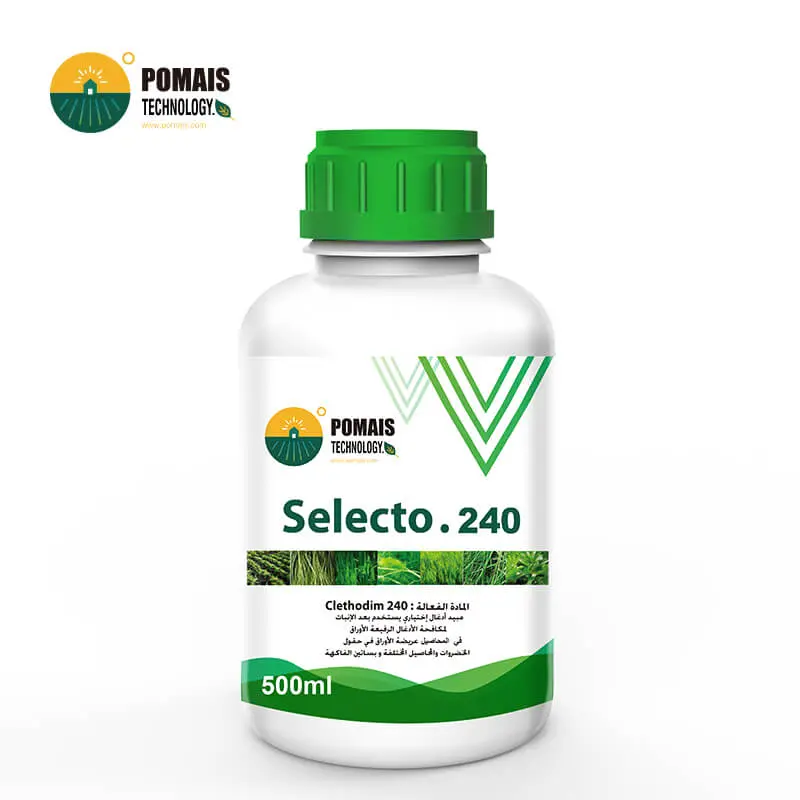
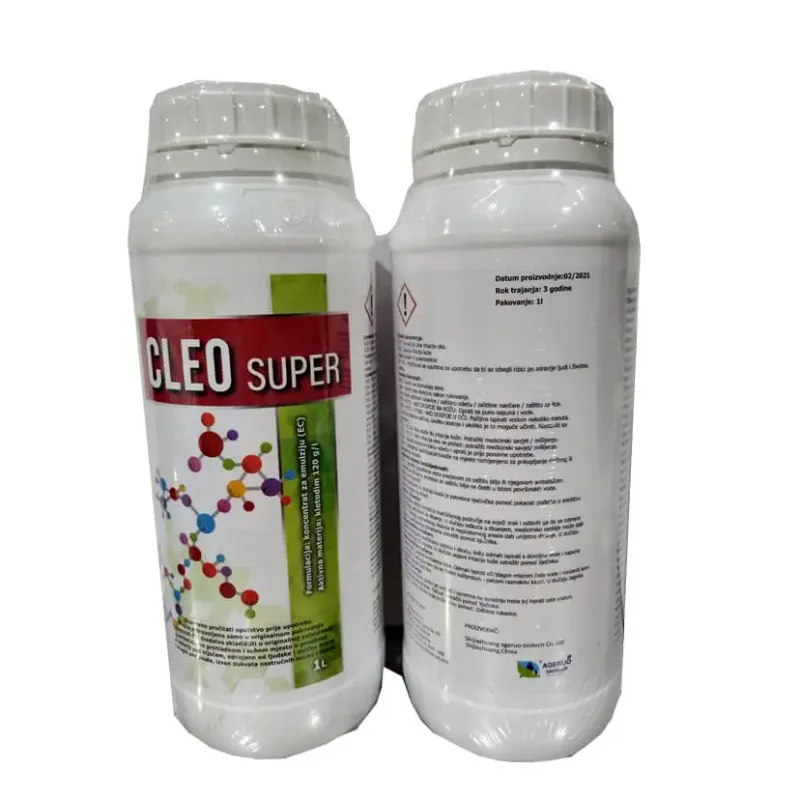
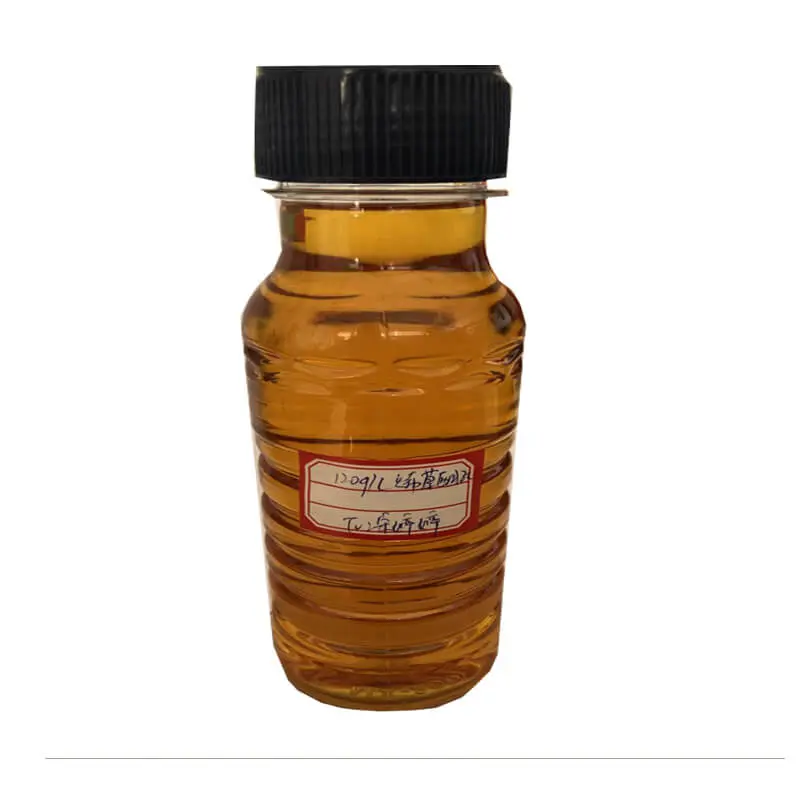
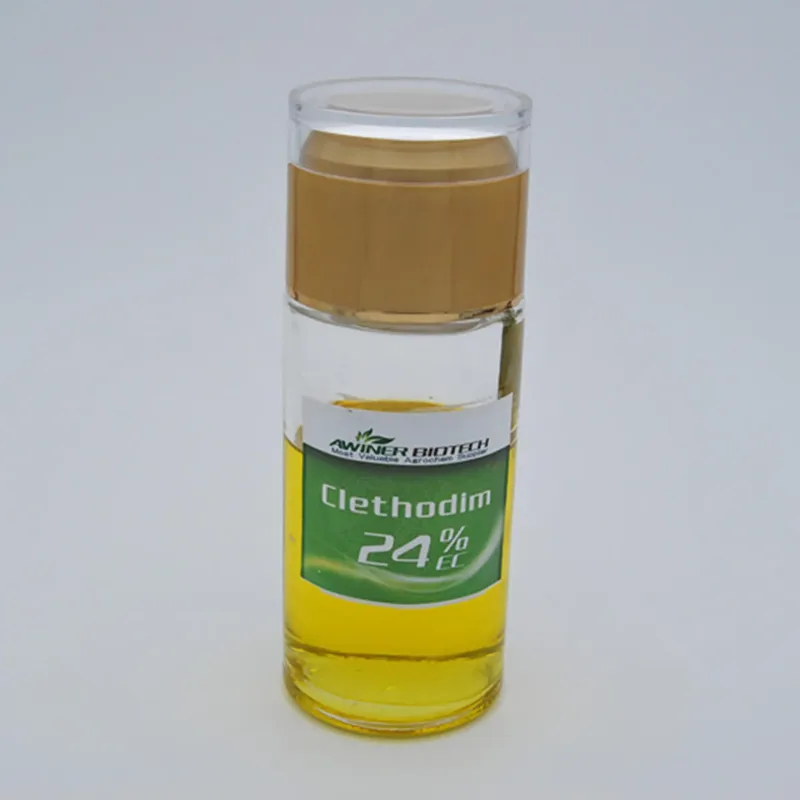
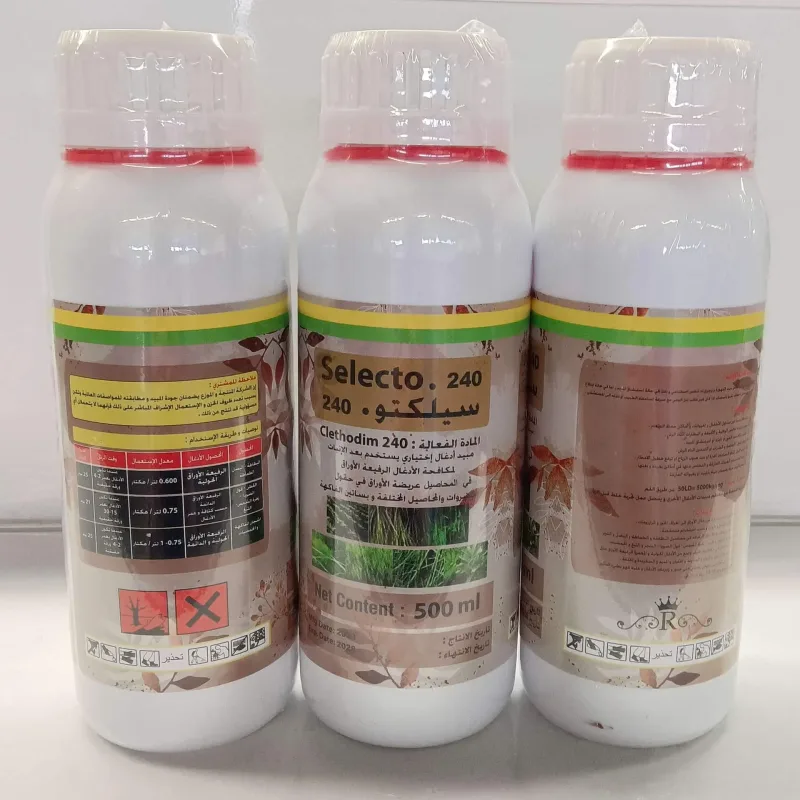
-e1742436475741.webp)
